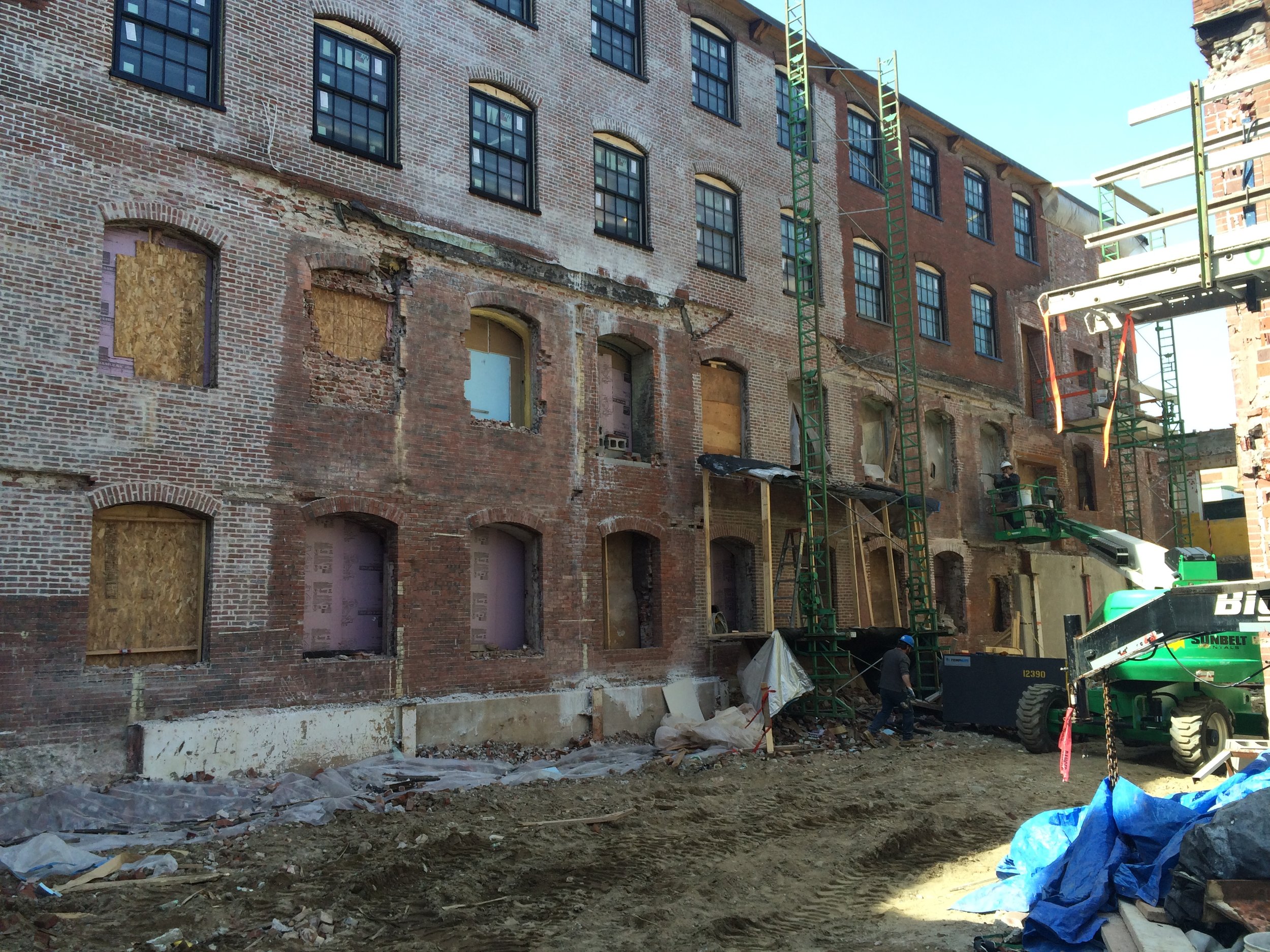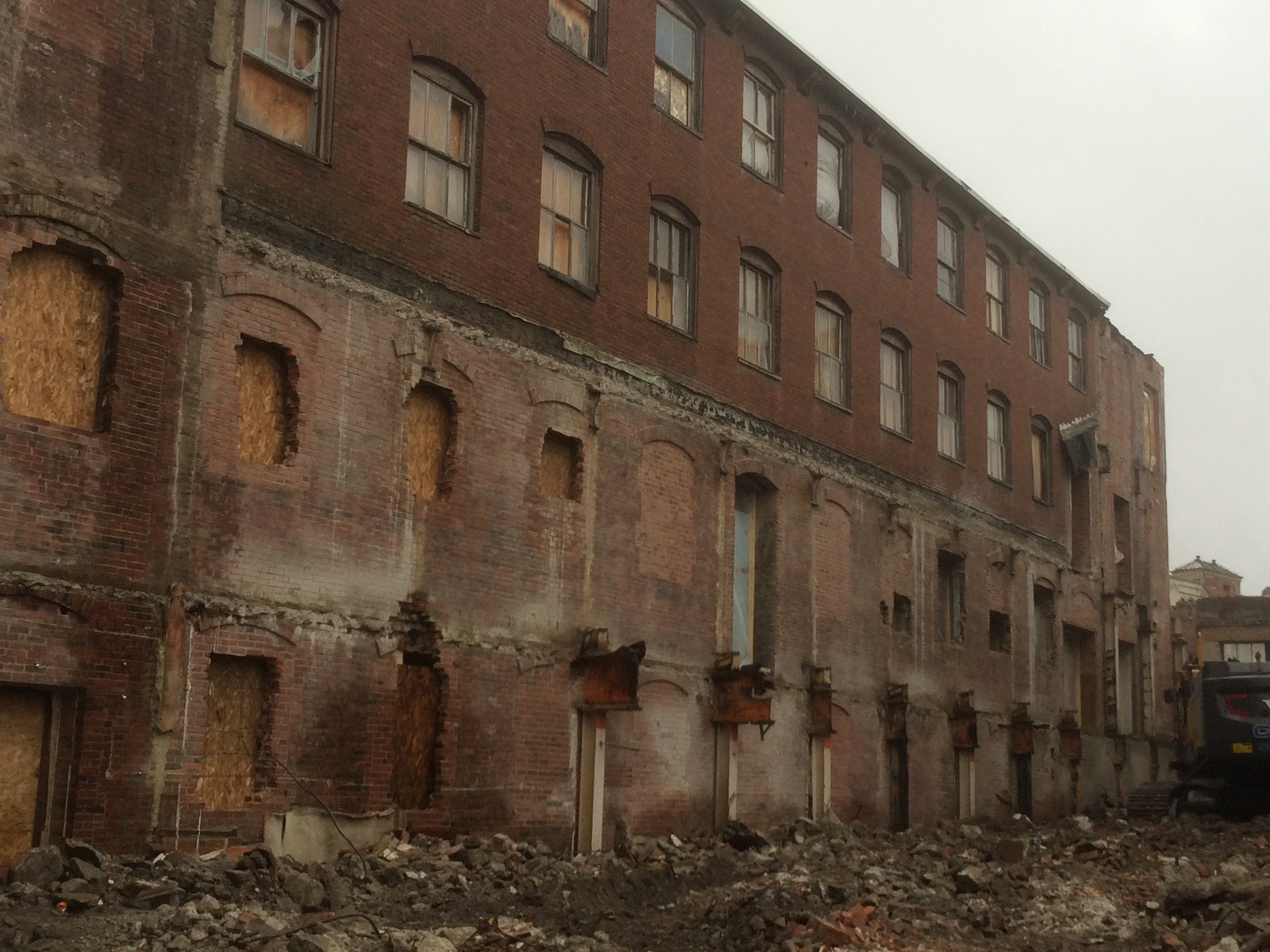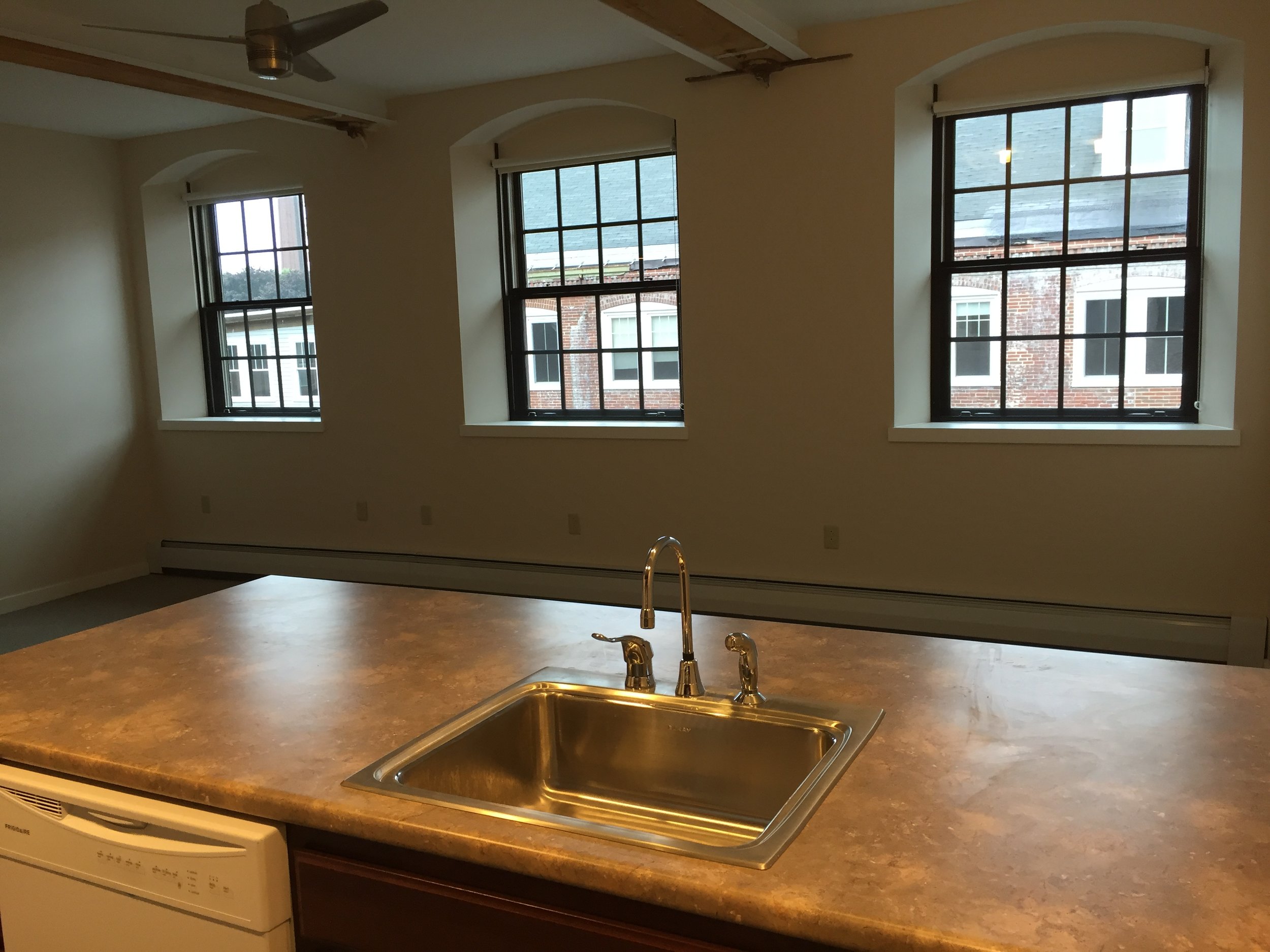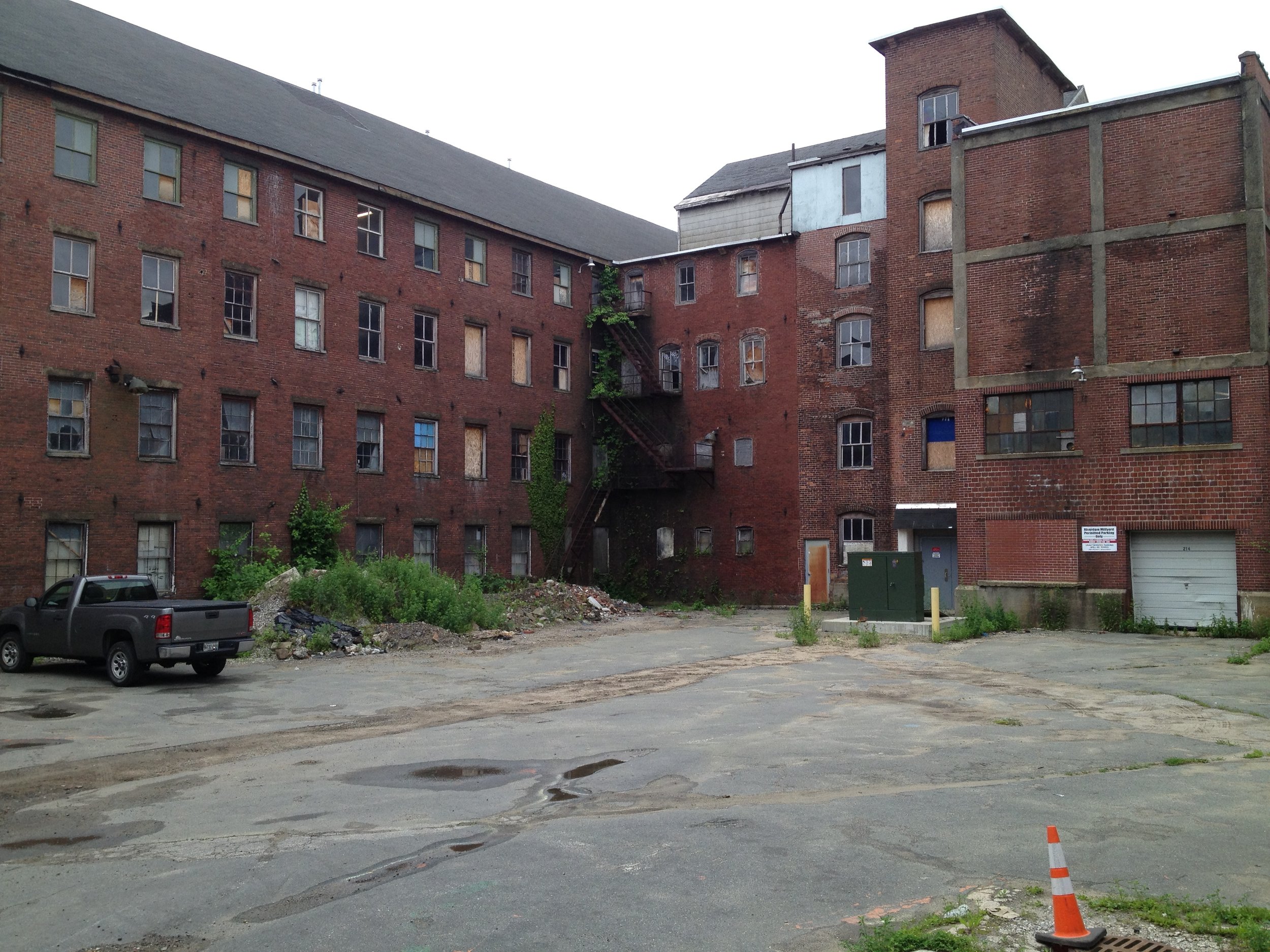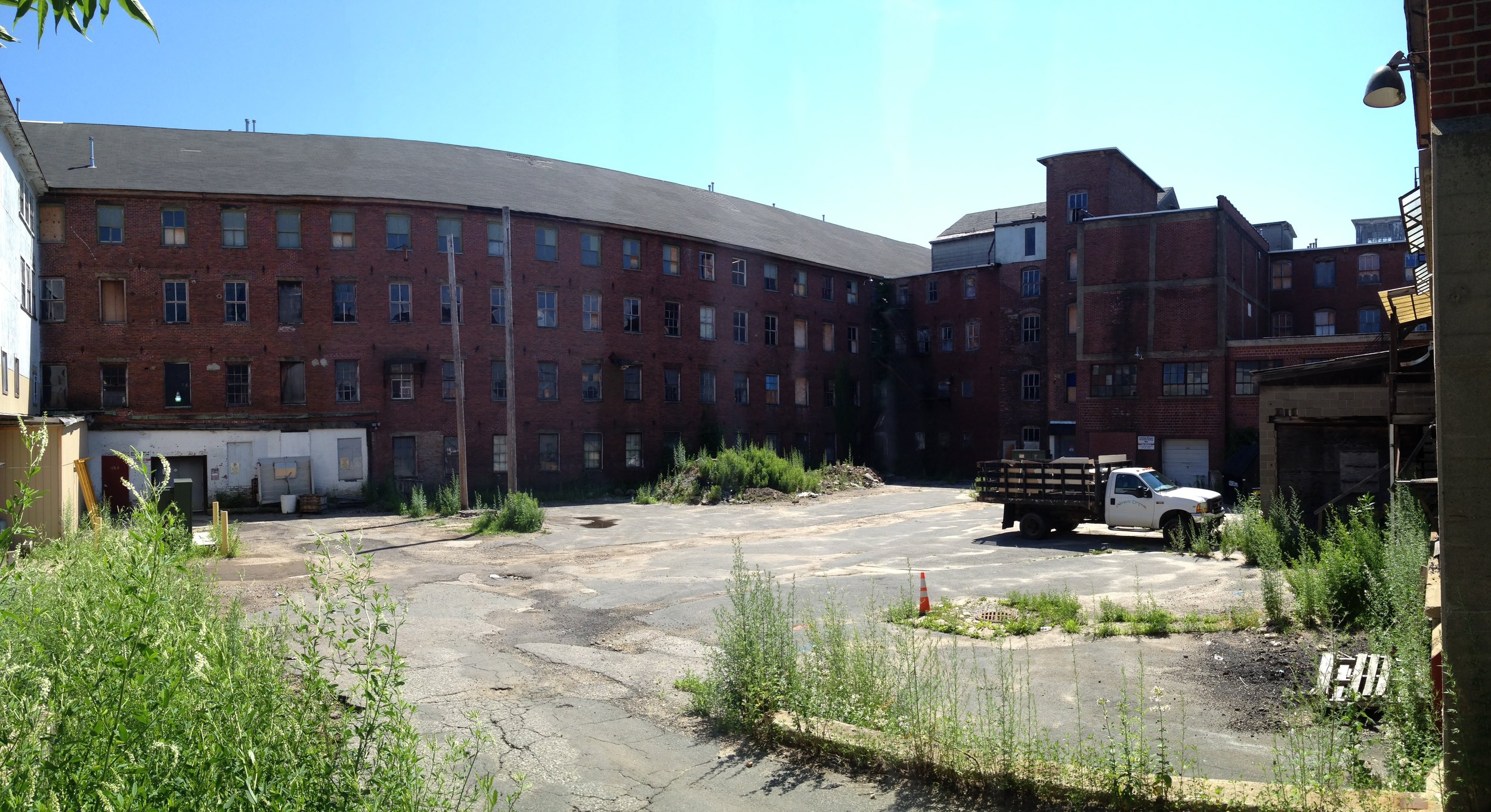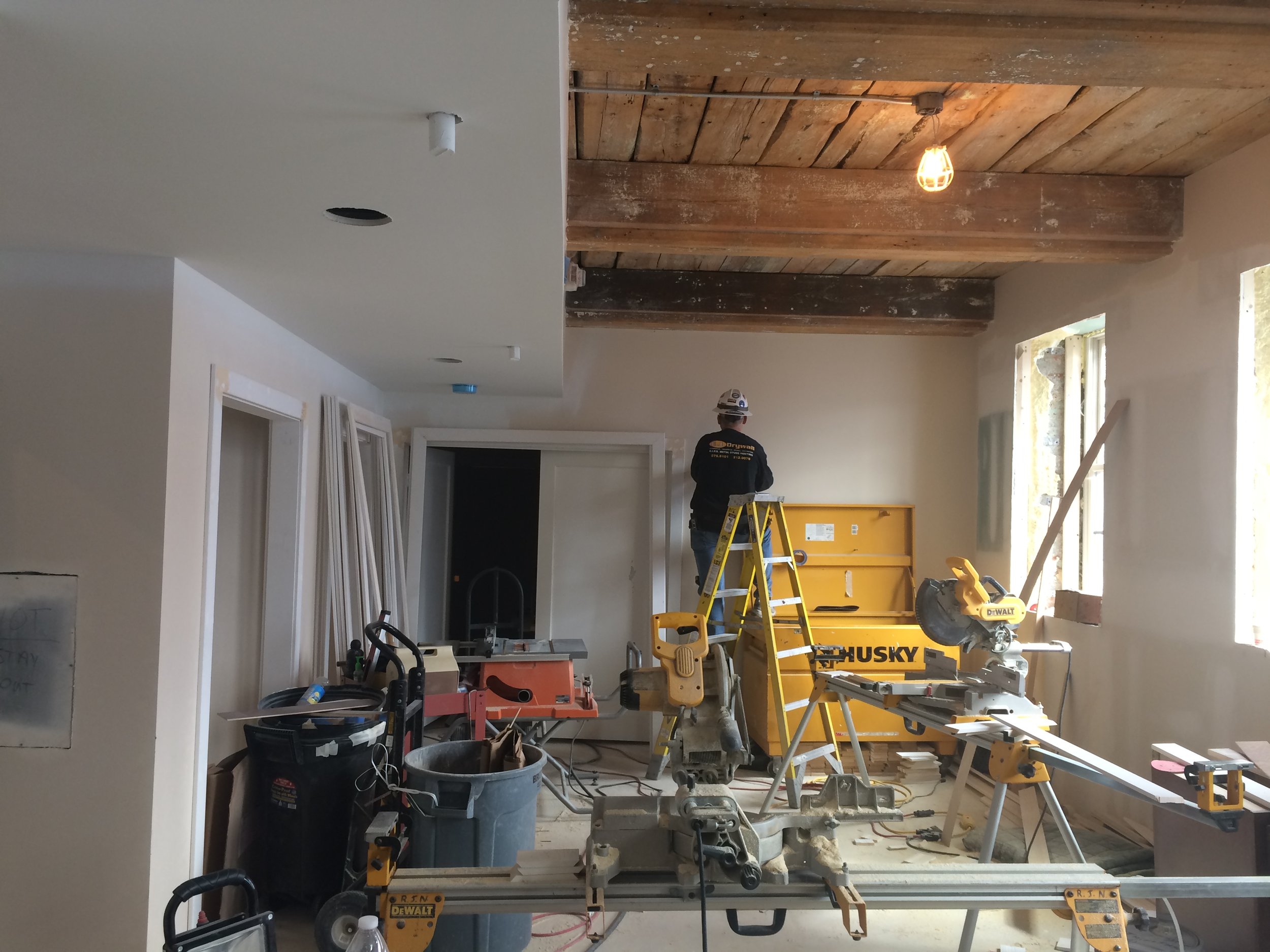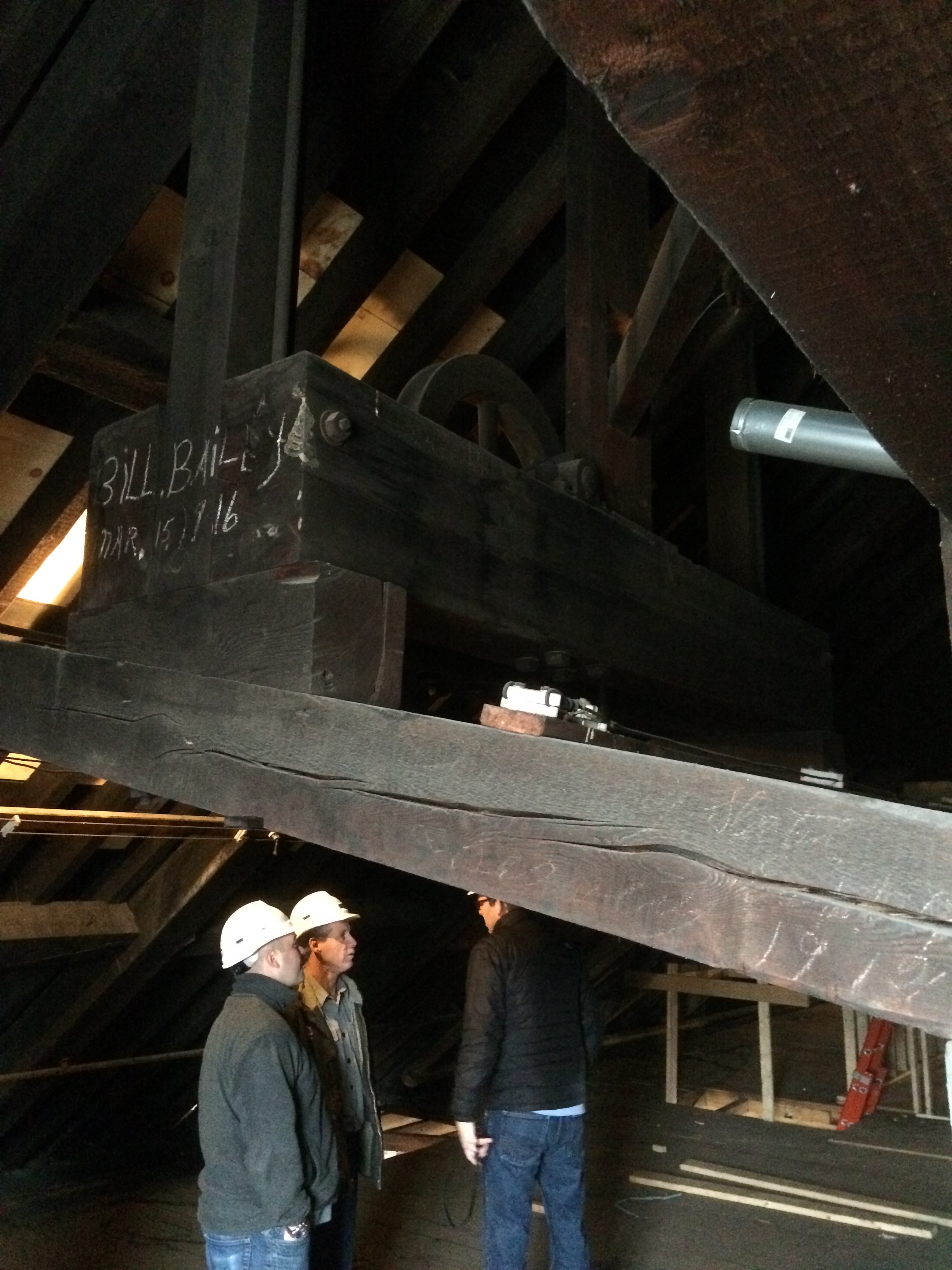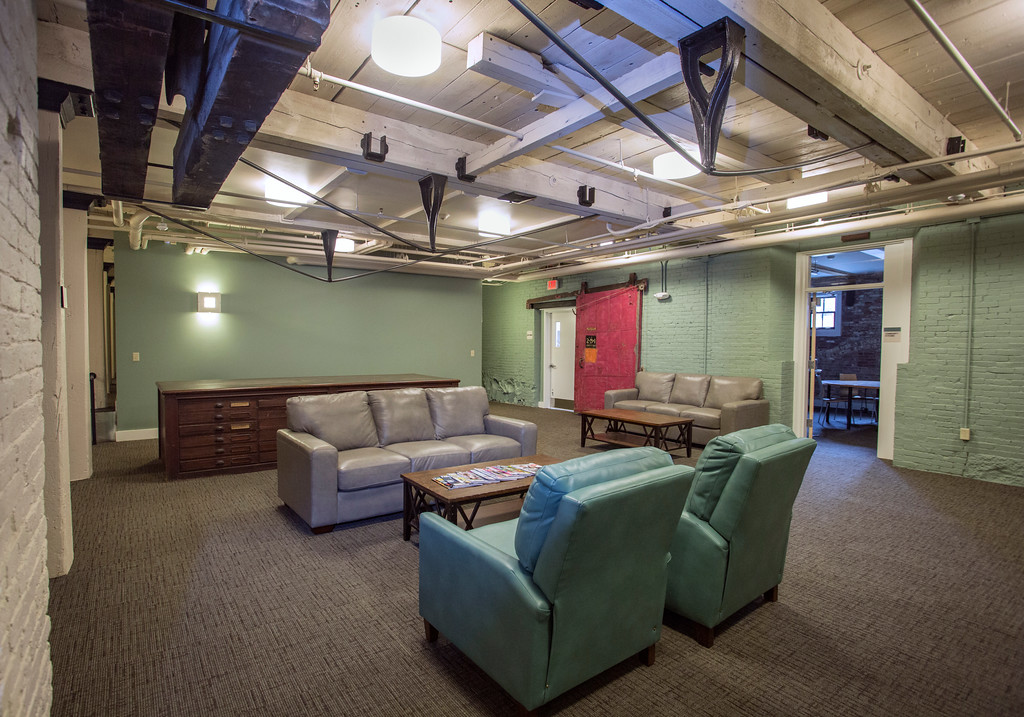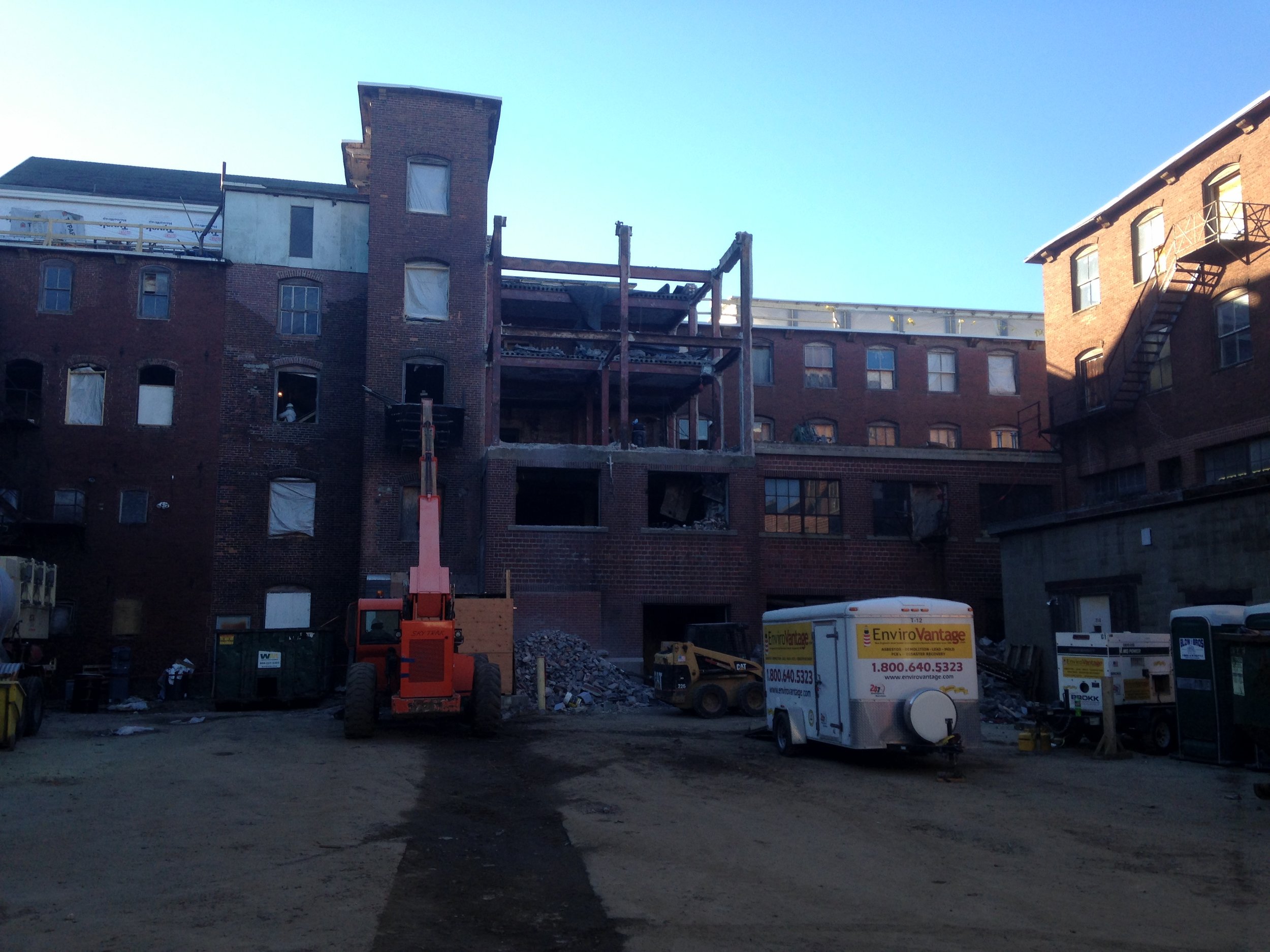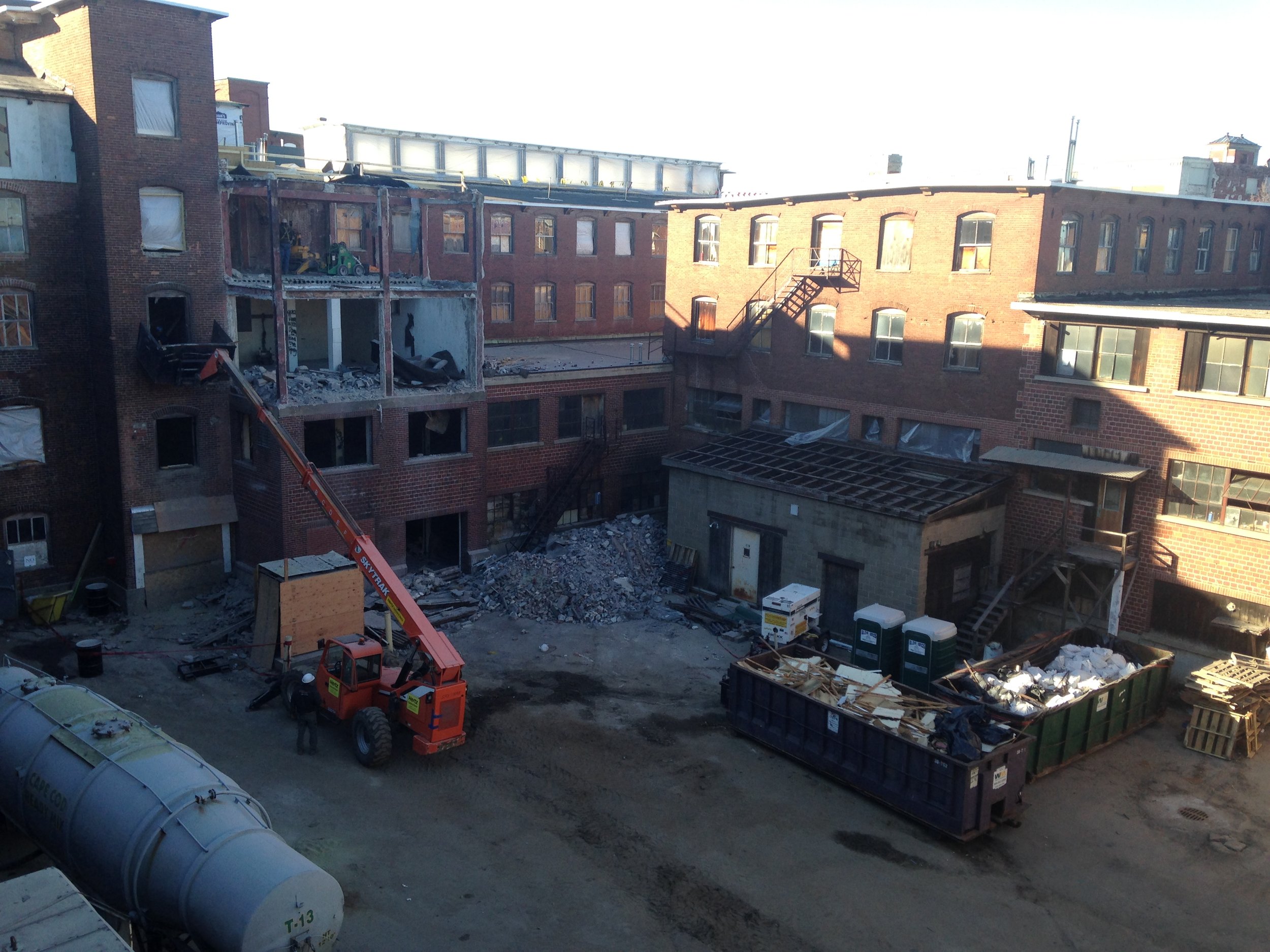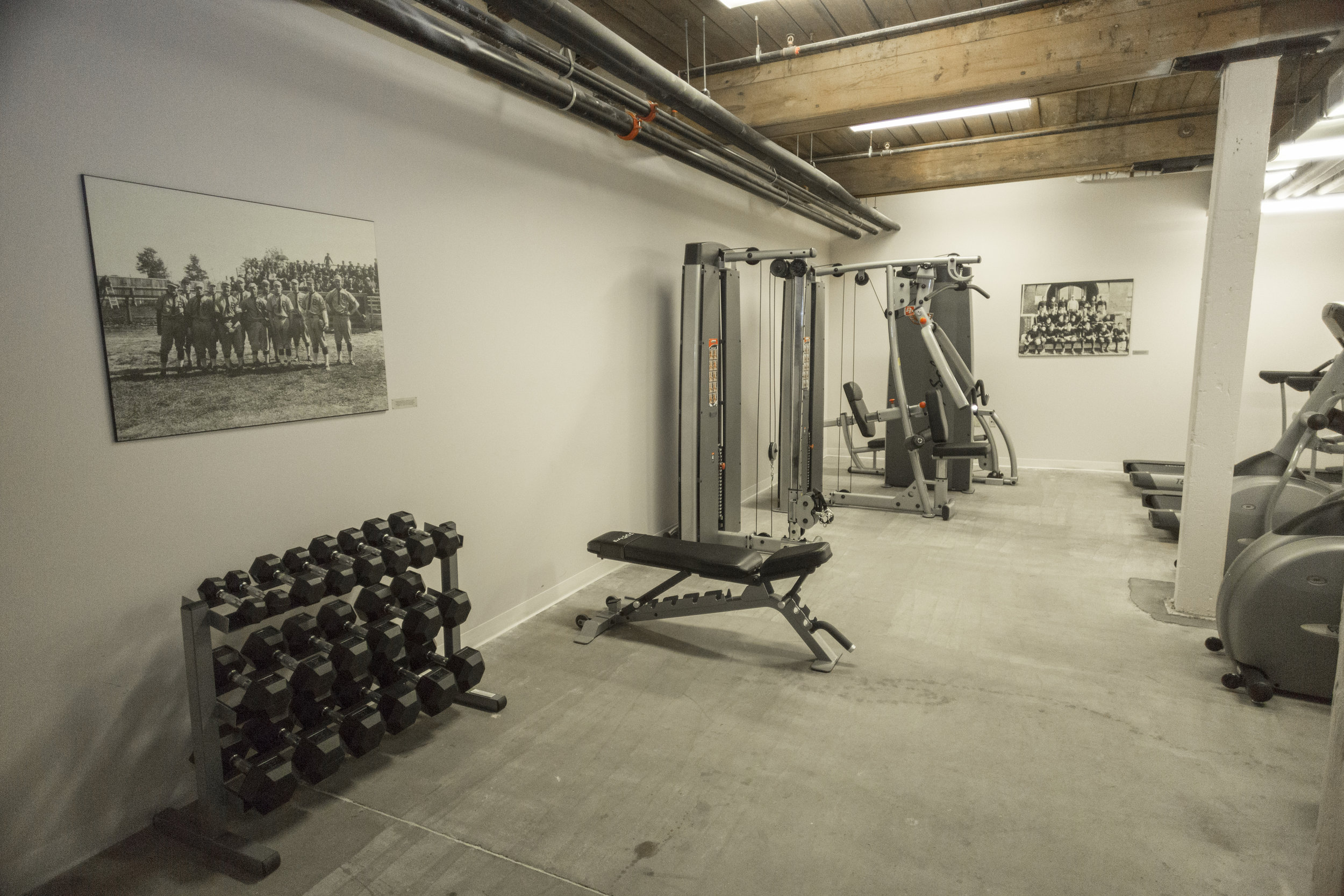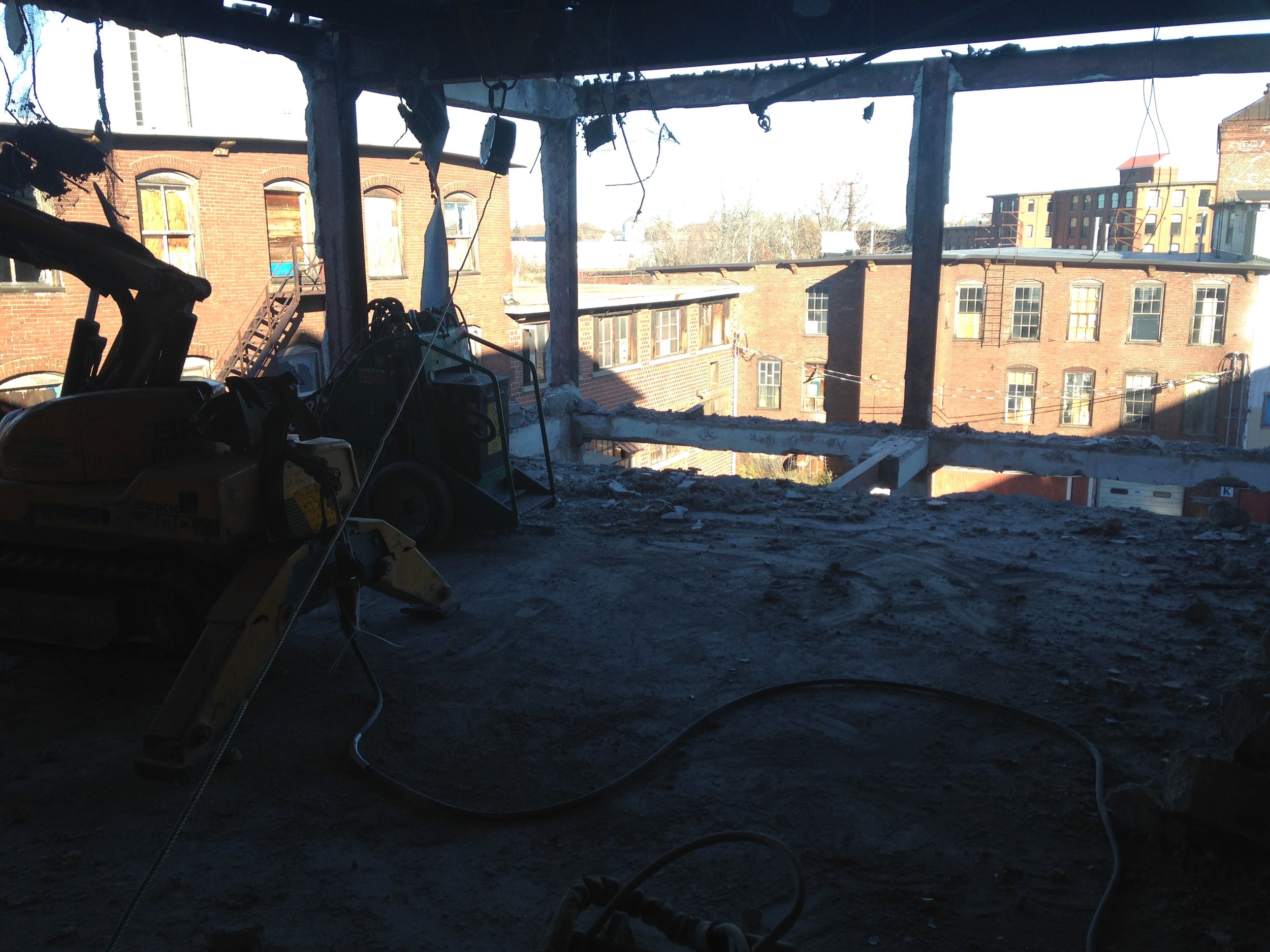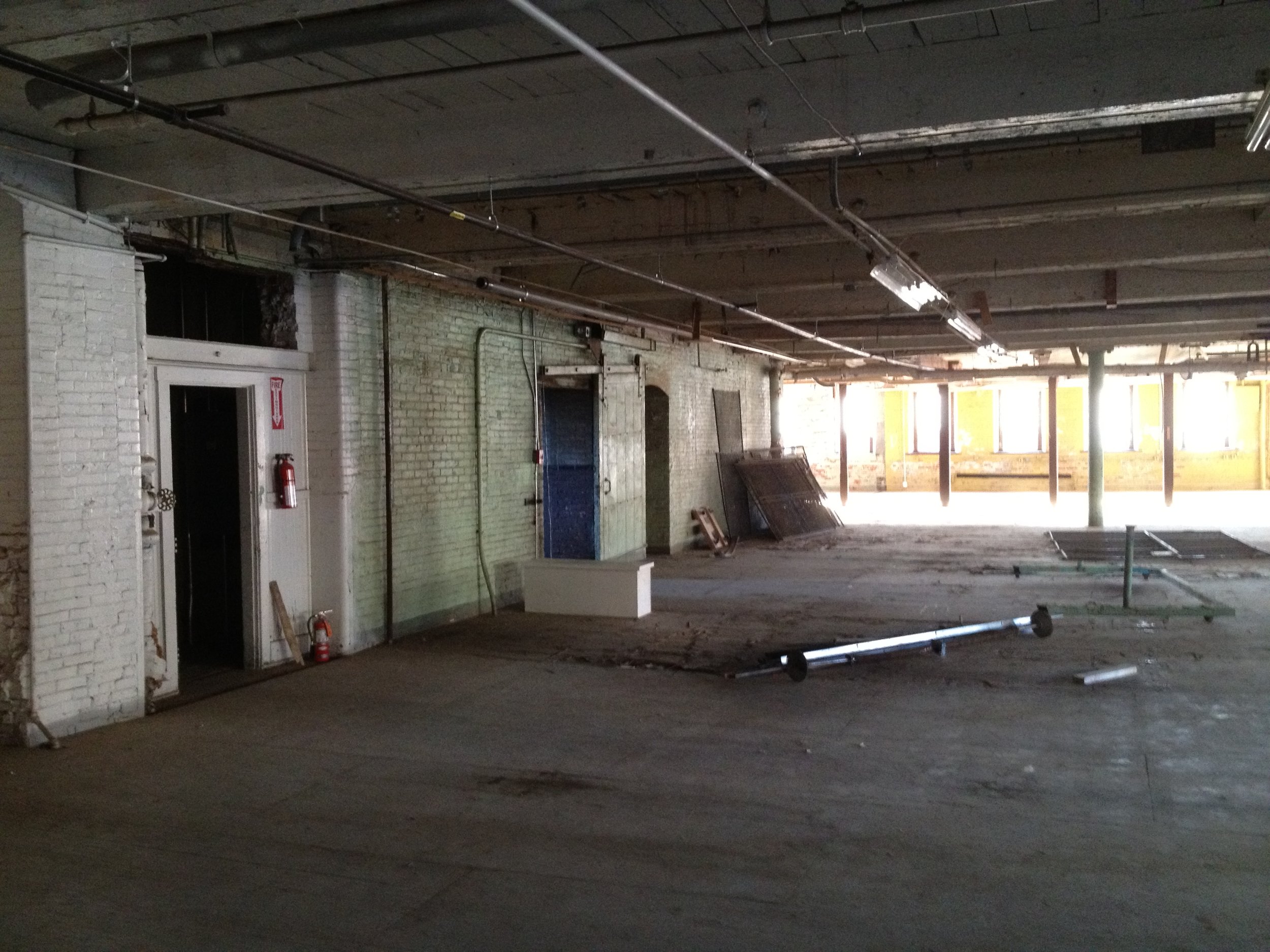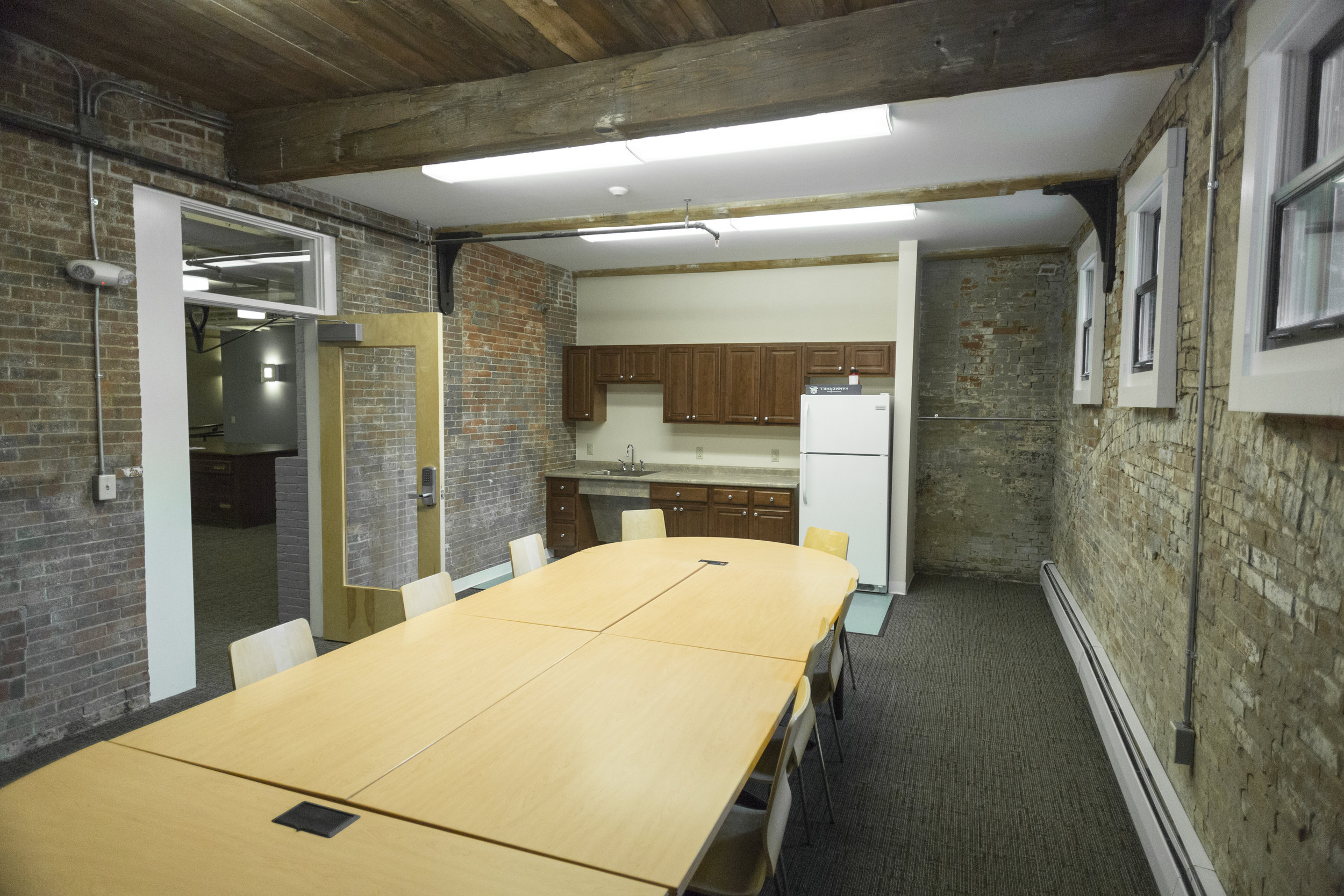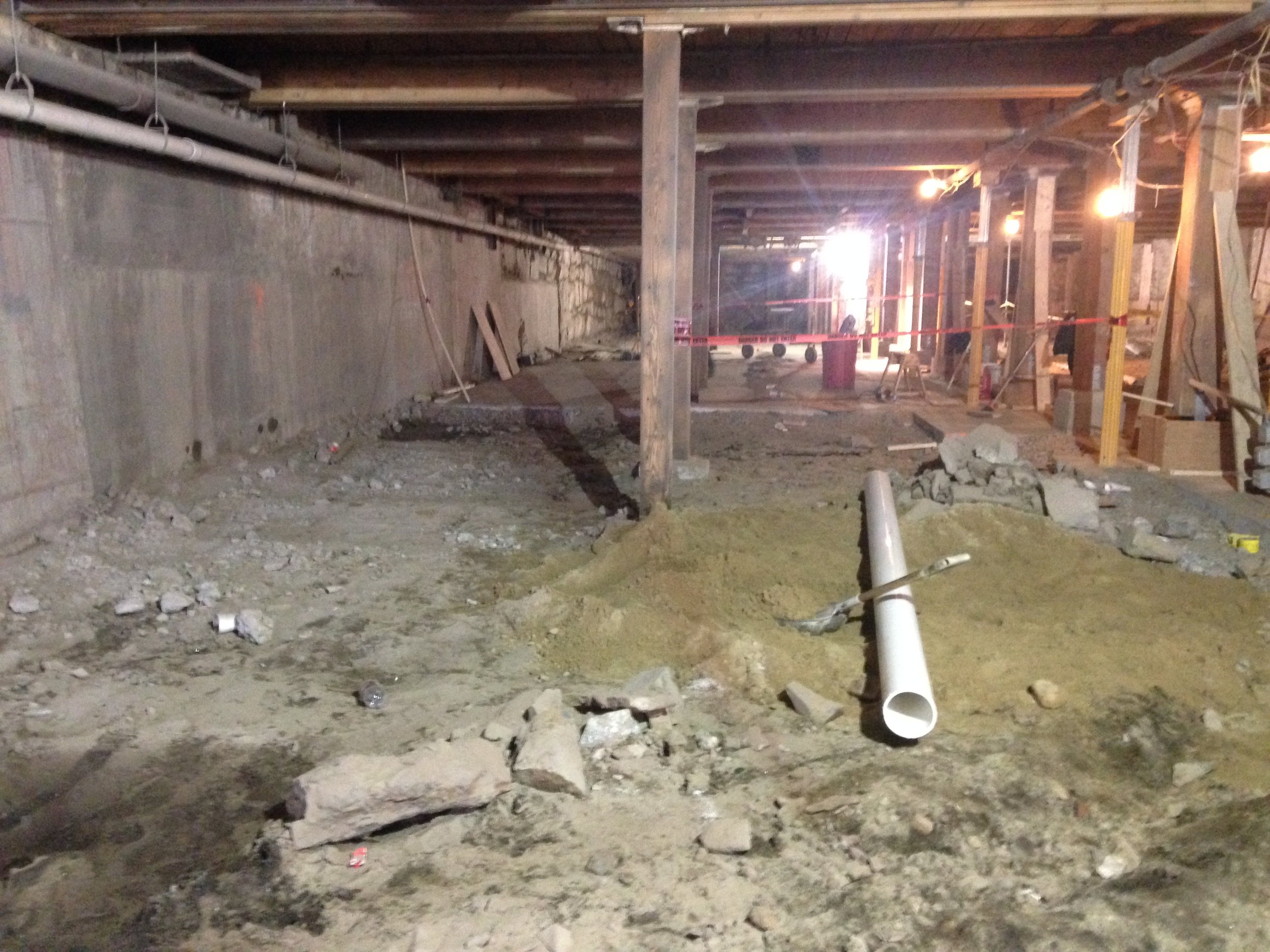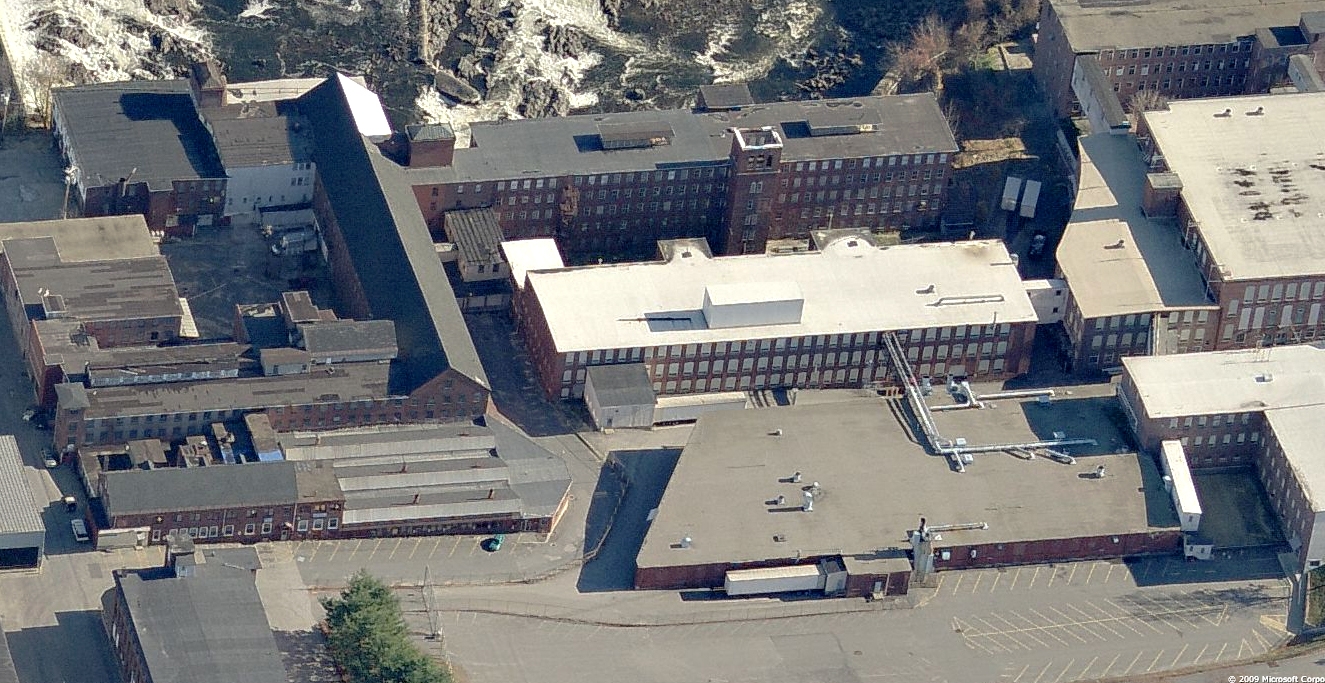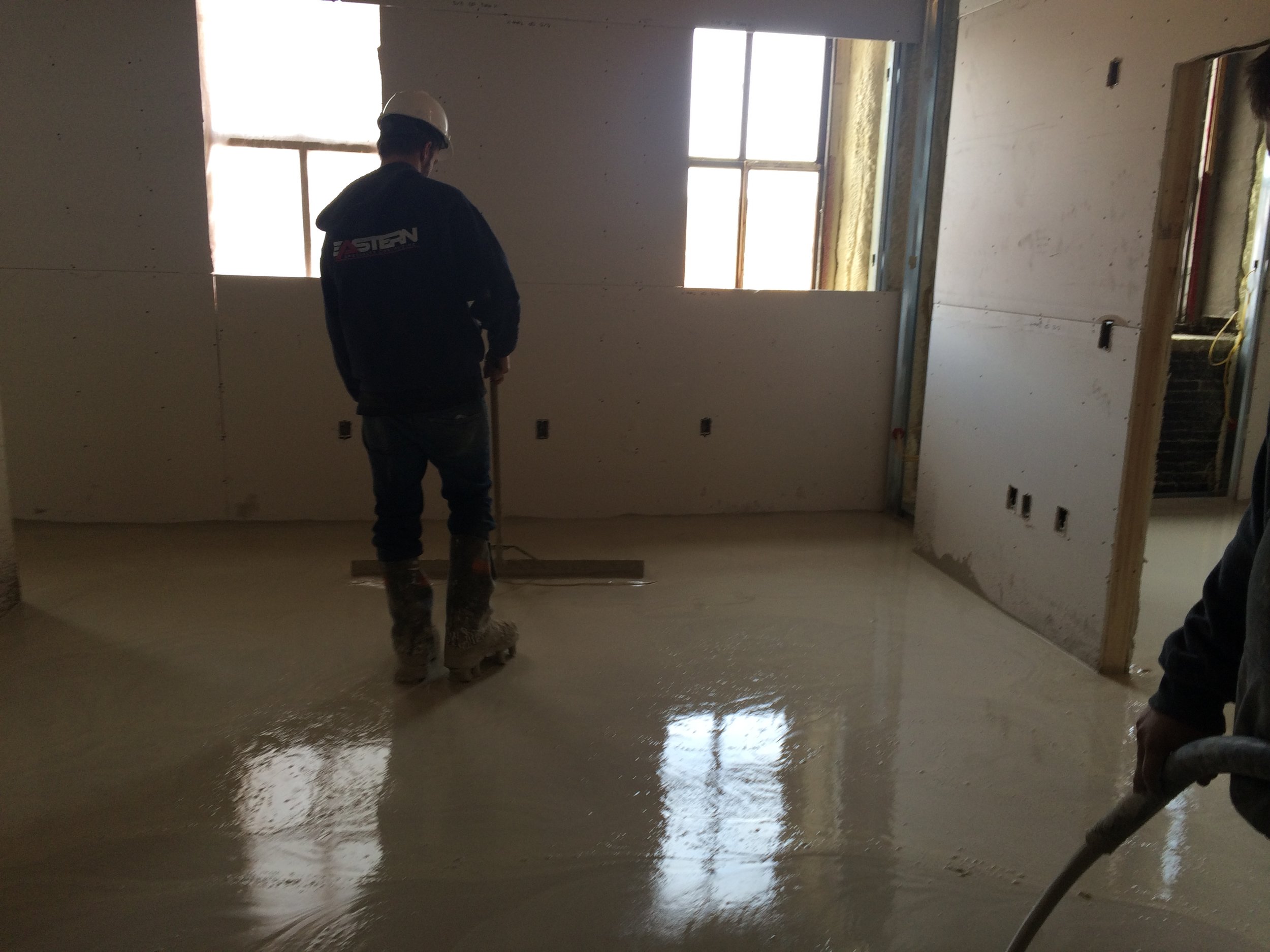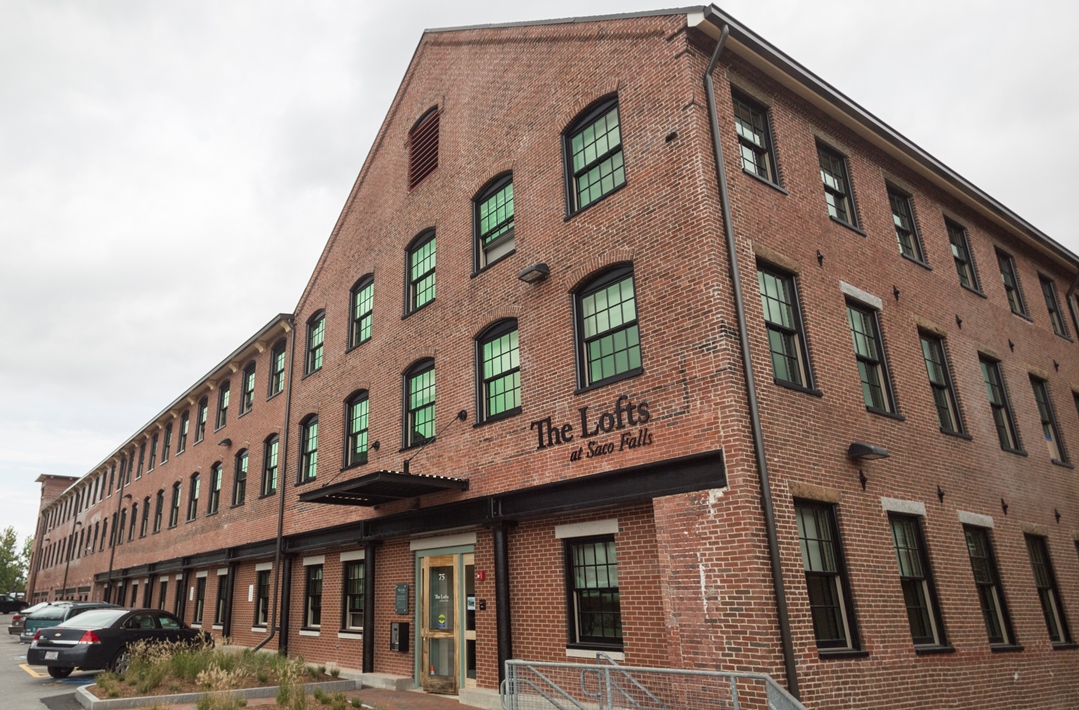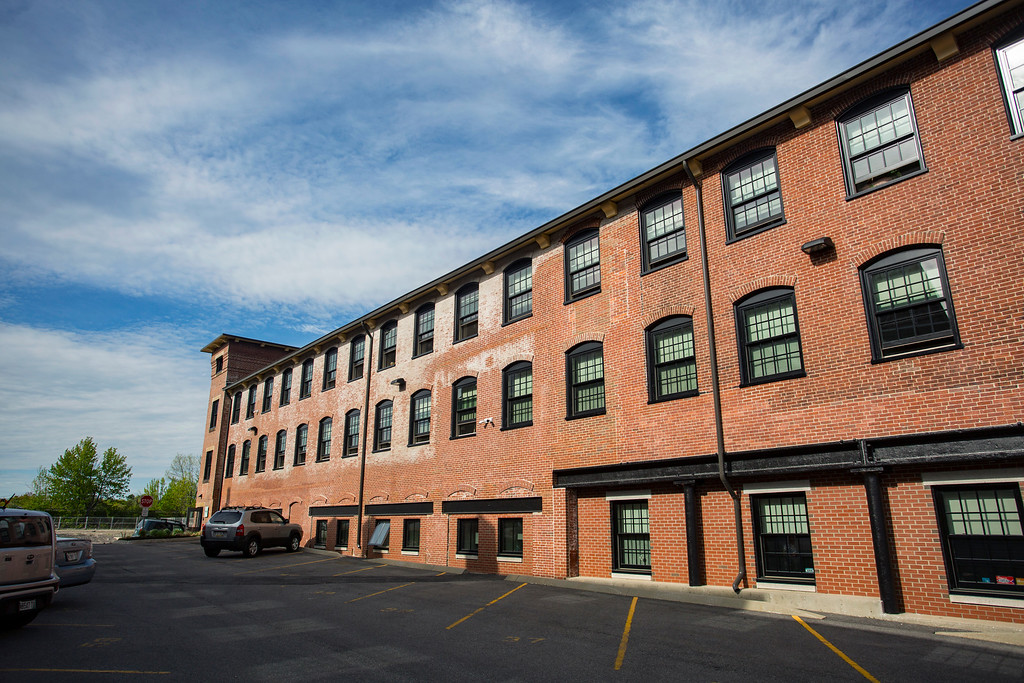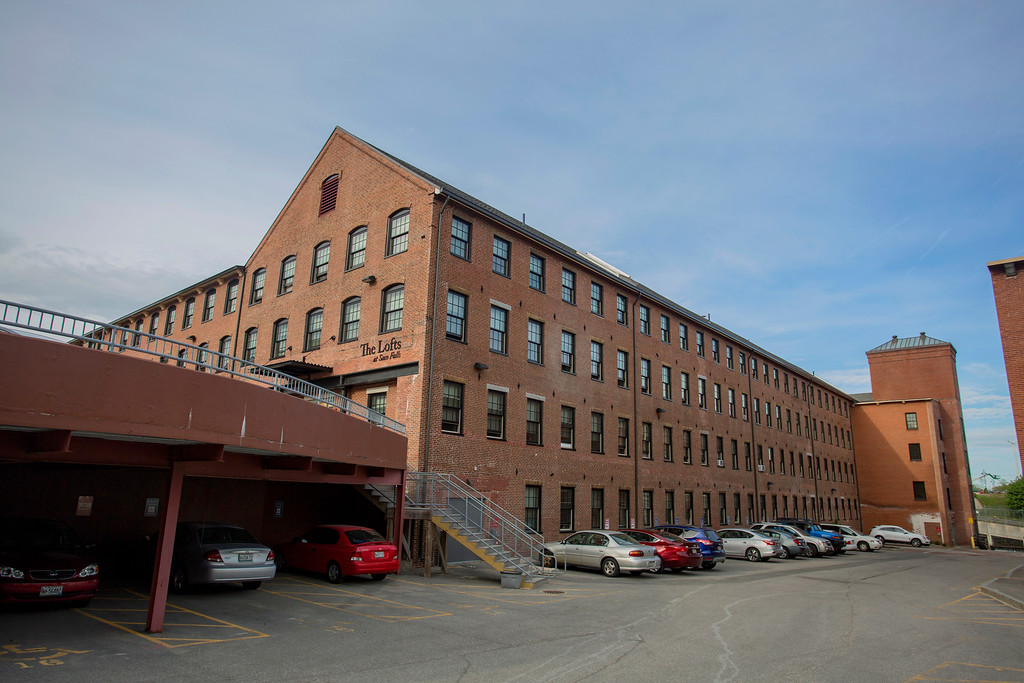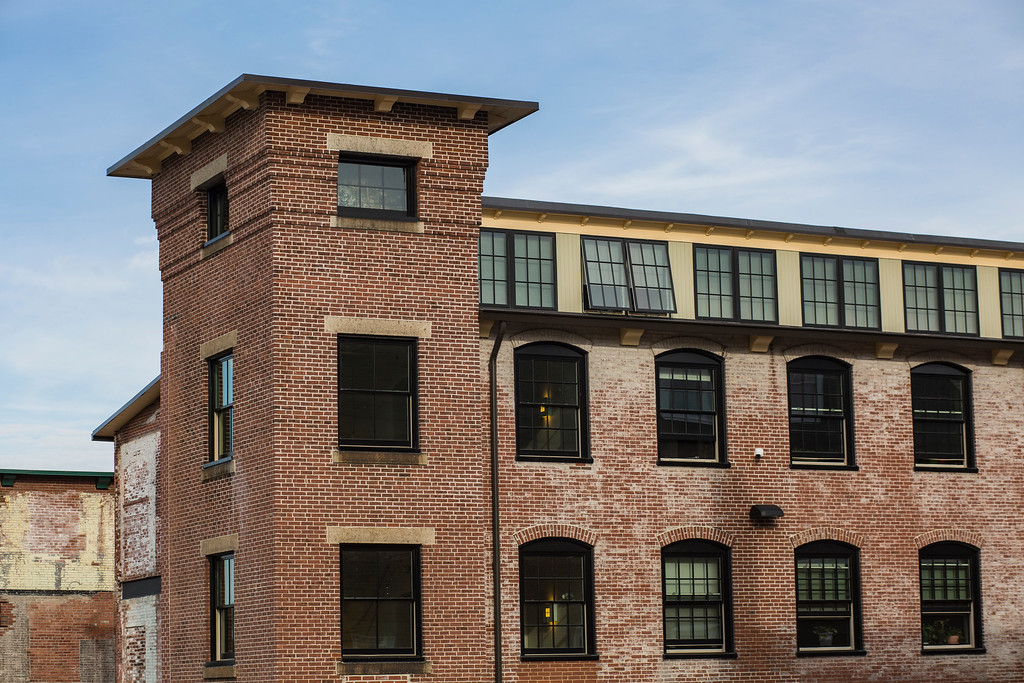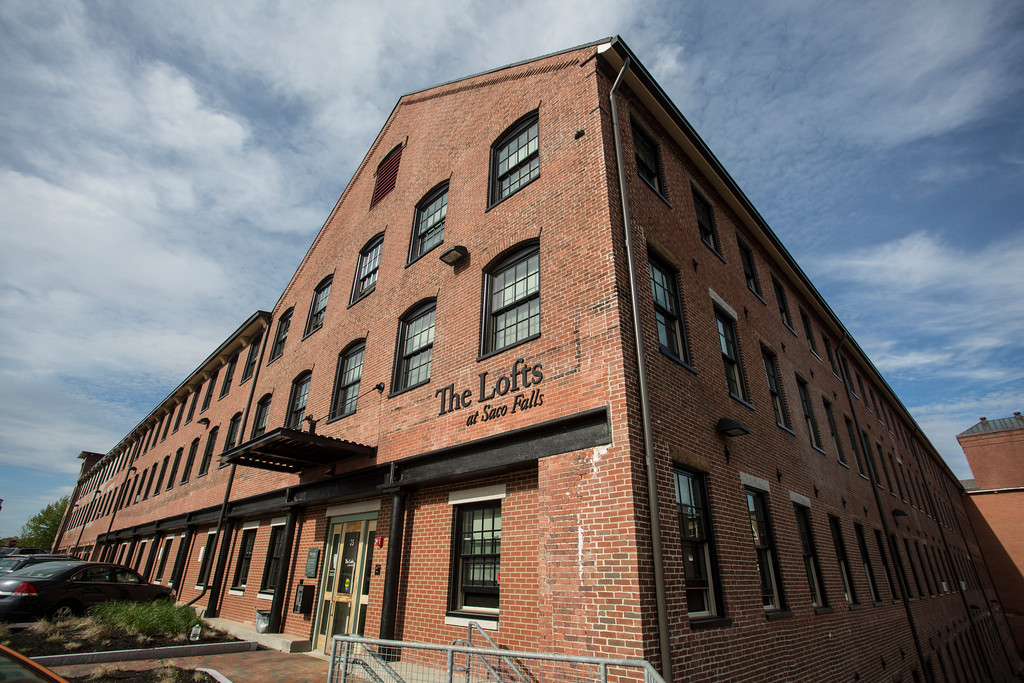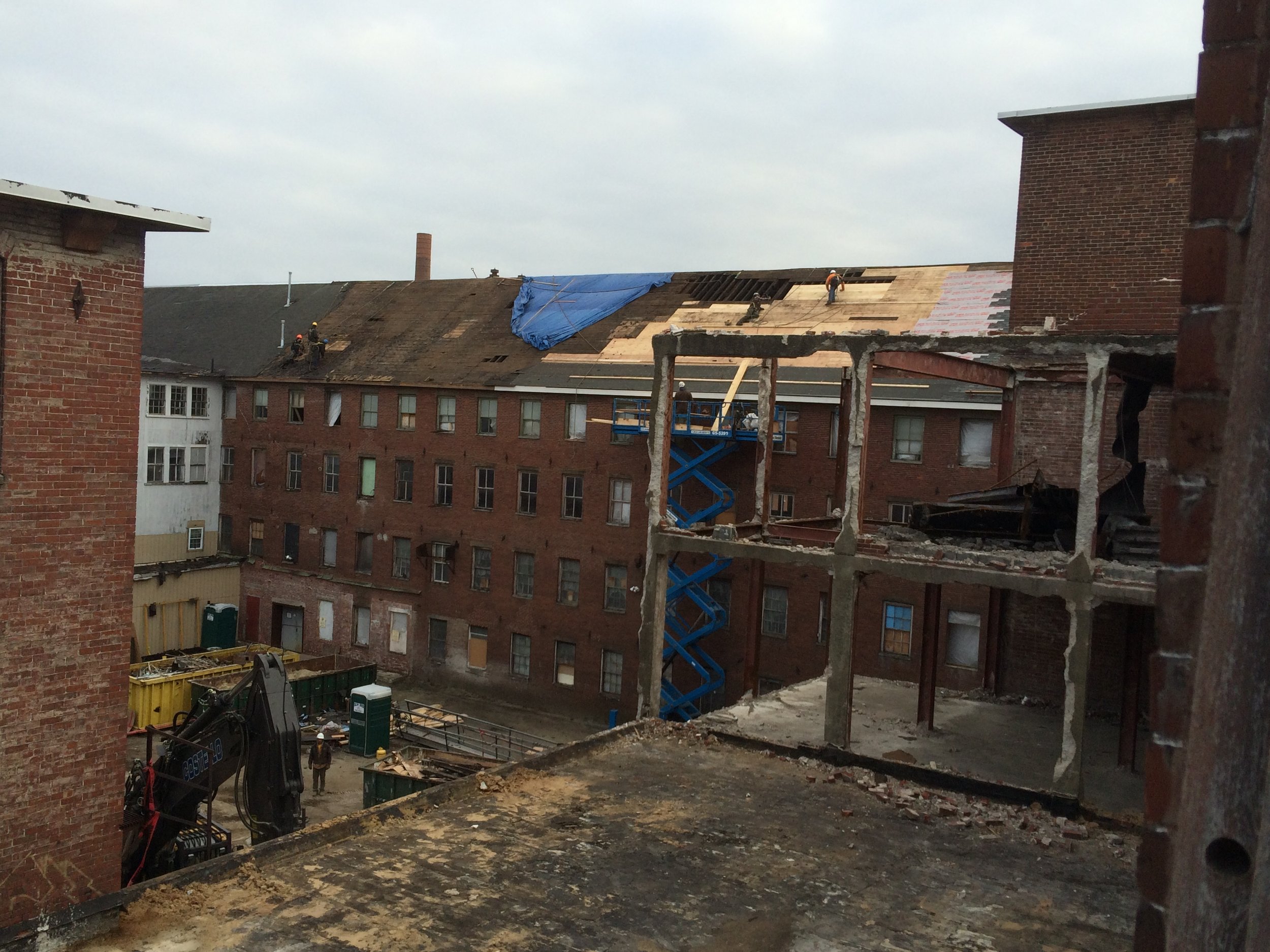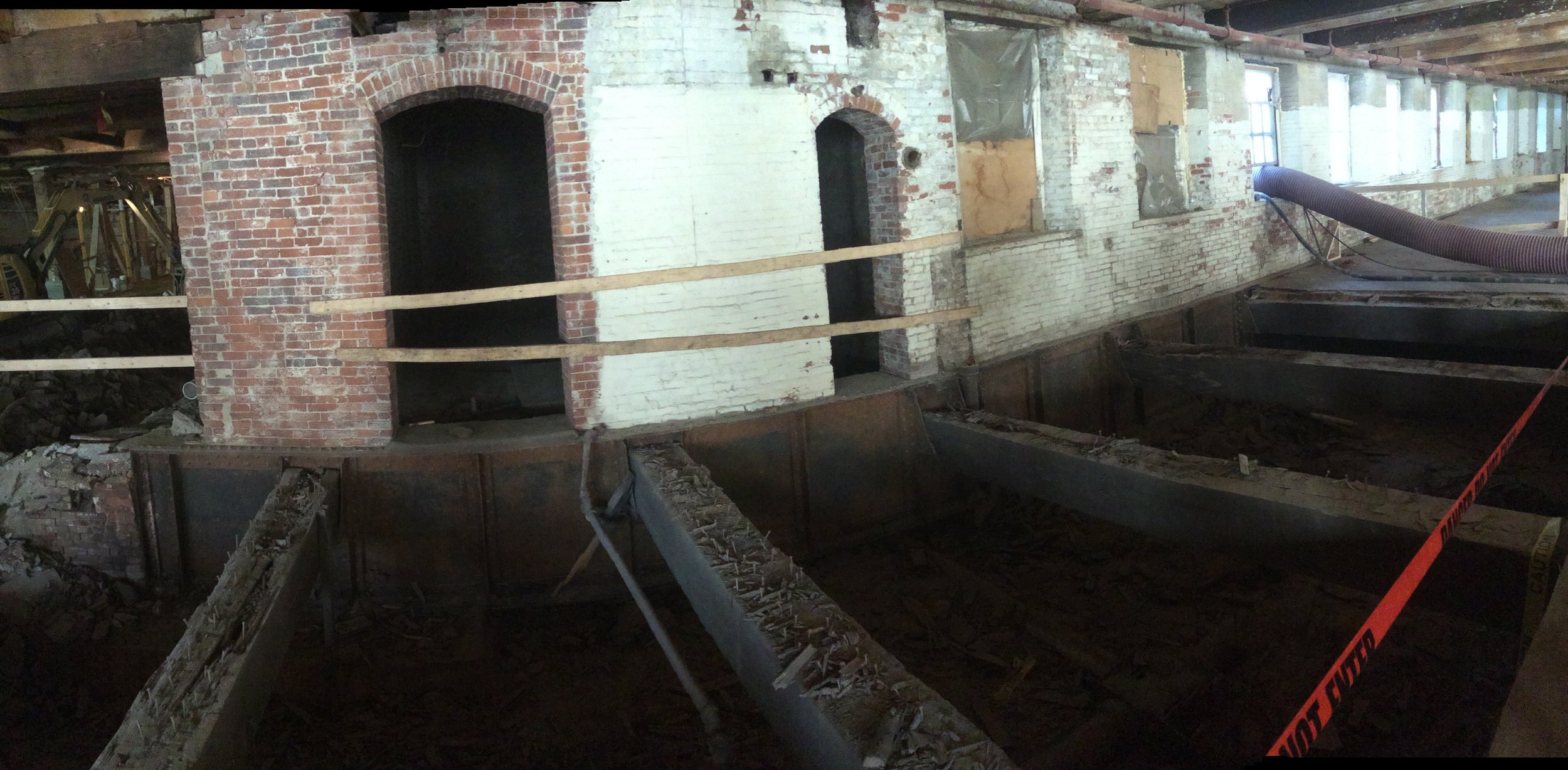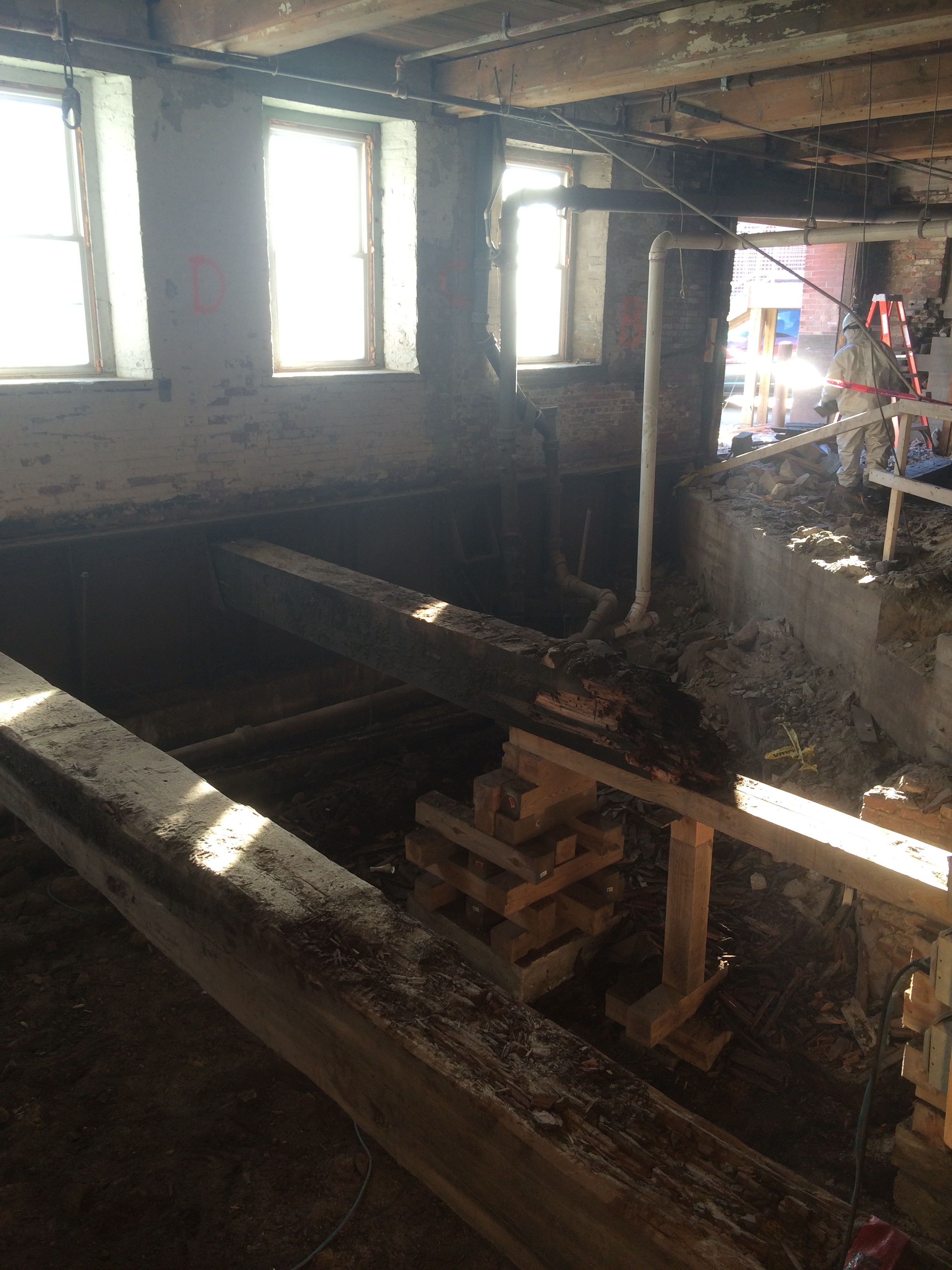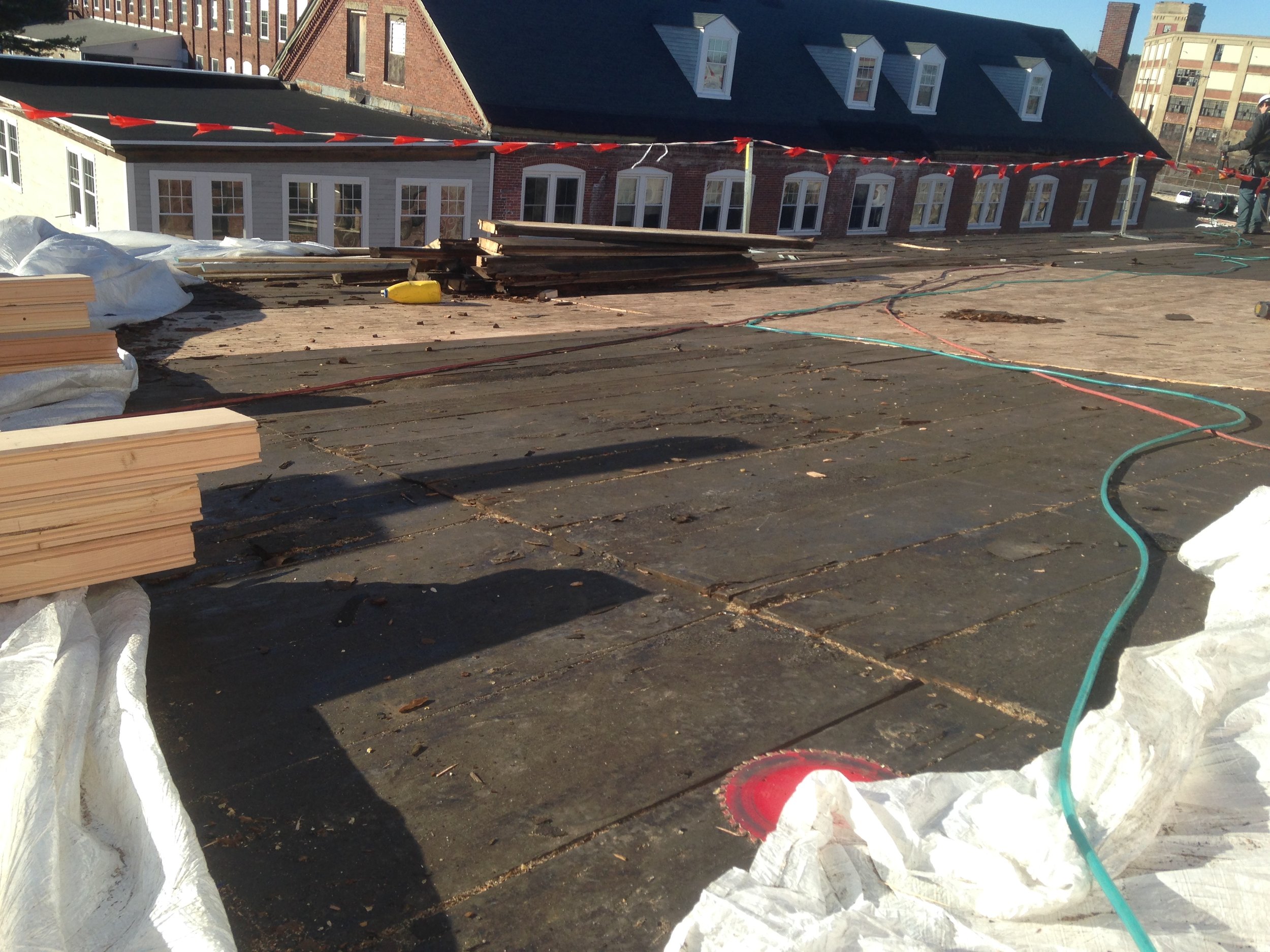








The Schlotterbeck & Foss Company was first incorporated in February 1892 as a premiere food and pharmaceuticals manufacturing facility in downtown Portland. The company’s 1927 home on Preble Street is significant as the only major Art Deco-style building designed by John Calvin Stevens and John Howard Stevens, and as one of the few surviving commercial buildings designed by the firm.
Structurally, the facility made use of then- new technology for supporting a large masonry building on filled land with composite wood and concrete pilings. It remained essentially unaltered from the time of its construction, but bore several examples of wear and tear. When ownership transferred to John Anton, Tom Watson and Brian Bush with a goal of rehabilitating the structure for residential use, Sutherland Conservation & Consulting prepared a nomination for inclusion on the National Register to make the building eligible for historic tax credits. Once funding was secured, rehabilitation processes with Goduti/Thomas Architects began, starting with masonry repairs to the cast stone and brick exterior, replacement of single-glazed windows with matching insulated windows, and installation of efficient modern mechanical systems.
The primary entrance on Preble Street was retained and restored for use by offices that now fill the first floor. The existing south entrance was expanded to provide access to both offices and residential units. Original stairs in the building were retained and a new, modern elevator installed. Residential units are located throughout the building and feature open plans with partial-height partition walls. Historic brick and concrete walls, floors, ceilings, and structural columns remain exposed, expressing the industrial character of the spaces.
The result of the project was the creation of 55 housing units in addition to first-floor office space. Taken together, they represent a vibrant new addition to Portland’s post-industrial Bayside neighborhood.





